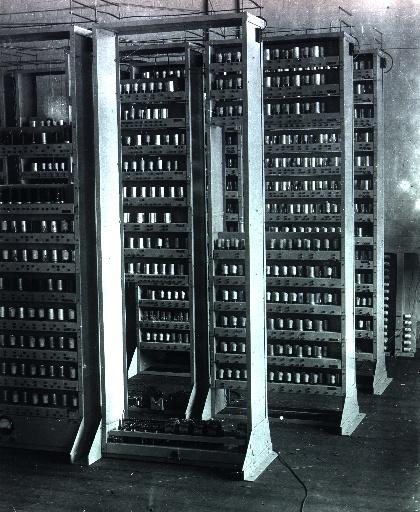An Innovative Nation

Microchips and Space

It was the microchip that triggered this computer revolution. The new industry developed in Santa Clara County, south of San Francisco, an area which soon came to be known as Silicon Valley.
To many Americans the "Microchip Revolution" means Silicon Valley - stretching from Palo Alto (home of Stanford University) to San Jose - named for the material that the microchip is made of. This area almost exploded into hectic activity in the 1970s.
Some of the giants of the electronics field which first located here were Apple Computers, Hewlett-Packard, Ampex, Varian, National Semiconductor, and the Intel Corporation.
This new industry soon spread to other parts of the country. Today there are hi-tech research centers located in different parts of the country: the Everett-Portland corridor in the Northwest; the Front Range near Denver, Colorado; the Research Triangle in North Carolina; and Route 128 around Boston, Massachusetts.

A large number of the projects developed in these hi-tech centers are defense-related. With the end of the Cold War they fell upon hard times. Defense projects and space flights started the boom. American space engineering began in the late 1950s at Cape Canaveral (later renamed The Kennedy Space Center for the late president), halfway down the Atlantic coast of Florida.
The North American Space Administration (NASA) was set up in Houston, Texas, and the stretch along the Gulf Coast from Florida to Texas soon came to be known as the "Rocketbelt".
The launch of the Russian satellite, Sputnik, in October 1957 marked the beginning of the space age. The event sent shock waves through American society and had a dramatic impact on the school system.
After Sputnik, the focus was upon mathematics and technical skills, since competent engineers were needed to close the technological gap between the USA and the Soviet Union. New scholarship programs and plans for economic support were passed by Congress to encourage students to go into these fields.
When President Kennedy took office in 1961, he promised that the USA would put a man on the moon by the end of that decade. Neil Armstrong made his historic moon walk in July 1969. Once more Americans had done what had seemed impossible.
NASA's current goal is to land people on Mars. The biggest challenge will not be getting there, but surviving on the barren planet. Americans like to think of themselves as living in the most advanced technological nation on earth and NASA with its aging space shuttle program needs a boost to invigorate enthusiasm. Landing on Mars would be just that and could unite Americans in an enthusiastic effort to succeed like in 1969. But there are critics who claim that spending $104-billion dollars on landing four astronauts on Mars by 2018 is not right. There is just too much underfunding of public services for that to be right. On the other hand, the technological and industrial development that follows in the wake of such a program might also increase the affluence of the US society.
Comprehension
Make five comprehension questions for this text. Sit in pairs and take turns asking and answering.
Interview
Make an interview with an old woman or man where they tell you about their childhood. Afterwards discuss in class what has changed? Also discuss what was better in the old days.
Discussion
- Does technology makes us vulnerable? Give examples.
- How would a day in your life change if you had no access to technology (watches, cars, audio players, heaters etc).
Writing
- Write a creative story which takes place in the future. Include some kind of technological breakdown that gets huge consequences.
(Suggested length 400 – 1200 words) - Write the first ever blog from Mars.
(Suggested length 400 – 1200 words)
Vocabulary
Write a sentence for each of the following words:
- microchip
- revolution
- hi-tech
- impact
- competent
- barren
- technological
- development
- enthusiastic